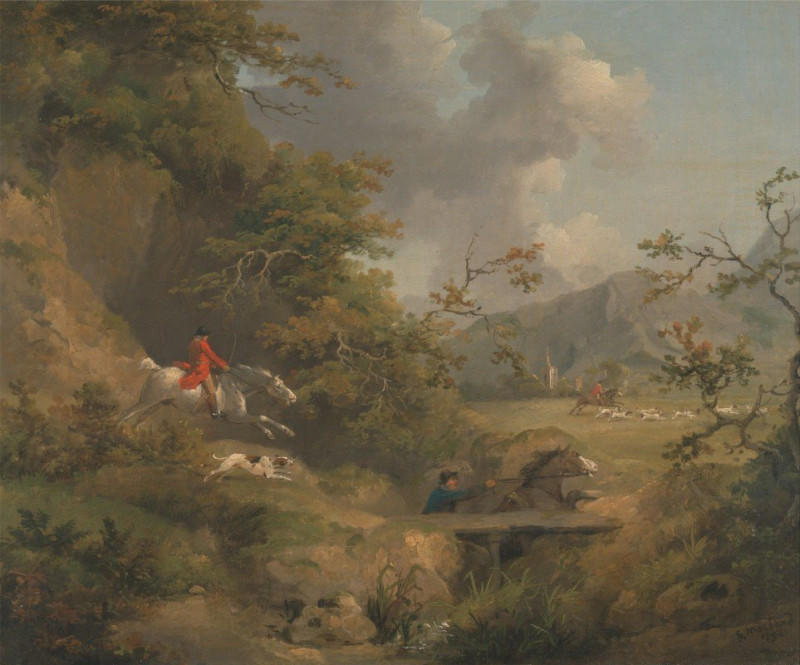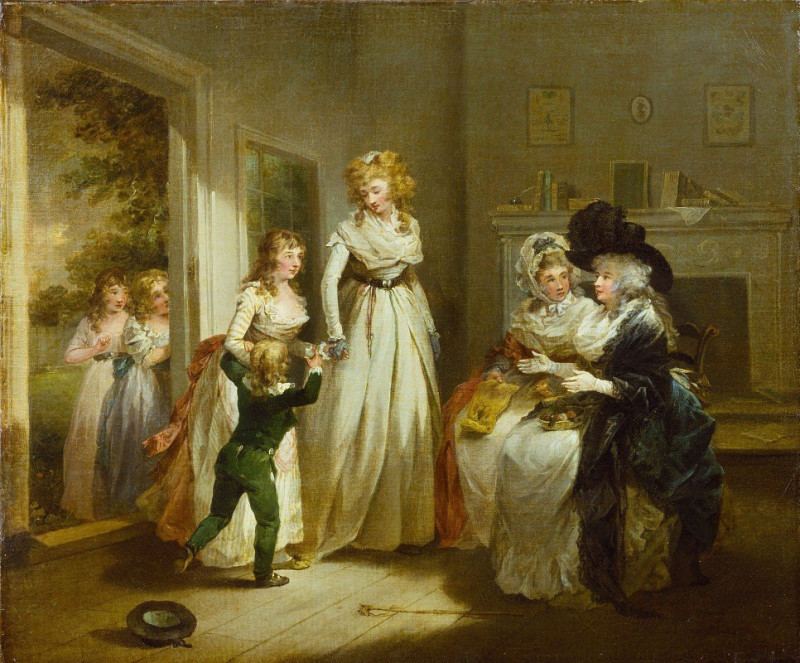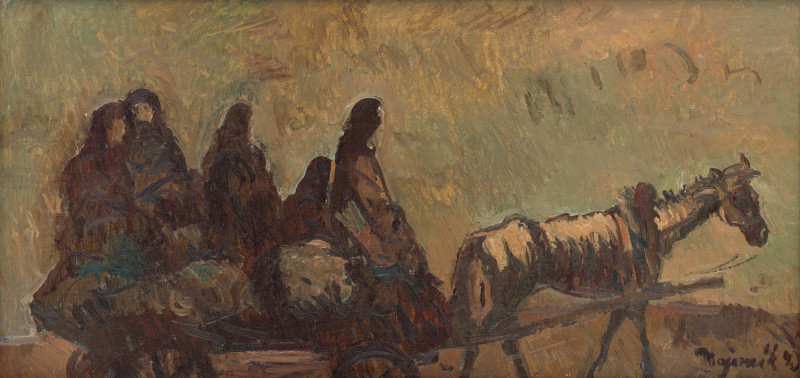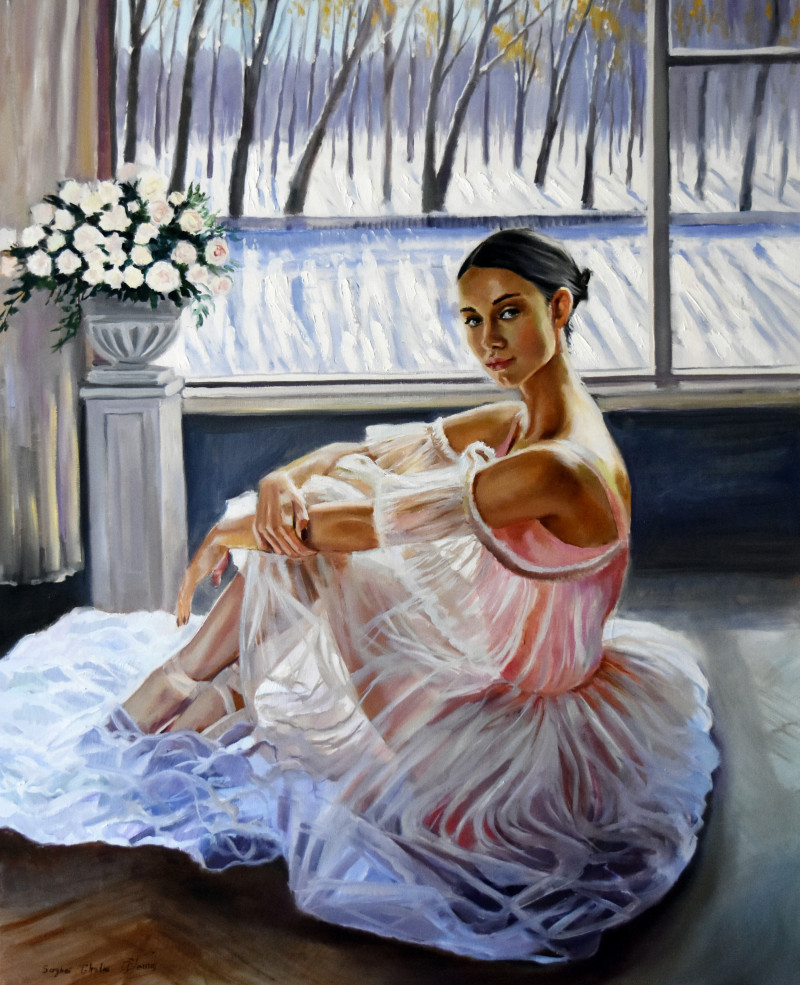The Horse Feeder (1797)
Technique: Giclée quality print
Recommended by our customers
More about this artwork
In the enchanting pastoral composition "The Horse Feeder," painted in 1797 by George Morland, the British artist captures a serene moment immersed in the tranquility of rural life. This artwork stands out for its detailed depiction of a simple, yet profoundly tranquil scene involving a young worker, horses, and a dog in a countryside setting.The painting displays a rustic stable setting where a young boy emerges from a thatched barn. He is depicted carrying a basket, possibly containing feed, as he regards one of two horses standing close by. The horses, one white and one bay, exude a gentle demeanor and appear to be waiting patiently for their meal. A small, attentive dog accompanies the boy, adding a further lively element to the scene. Morland's work is celebrated for such vivid portrayals of human and animal interactions, and this painting beautifully encapsulates this theme.The background features lush greenery and a tranquil sky, suggesting a peaceful rural life that is connected deeply with nature. Morland's technique of using soft, naturalistic colors adds a warm and inviting atmosphere to the scene.In "The Horse Feeder," George Morland not only exemplifies his skill in capturing the beauty of rural England but also reflects the 18th-century society's appreciation of the pastoral life. The calm and content expressions of the characters, along with the harmonious setting, foster a sense of simplicity and timelessness.
Delivery
Returns
George Morland (26 June 1763 – 29 October 1804) was an English painter. His early work was influenced by Francis Wheatley, but after the 1790s he came into his own style. His best compositions focus on rustic scenes: farms and hunting; smugglers and gypsies; and rich, textured landscapes informed by Dutch Golden Age painting.














































